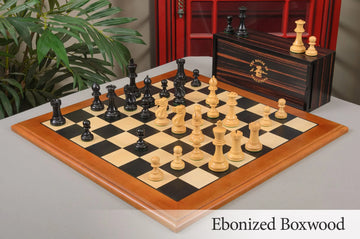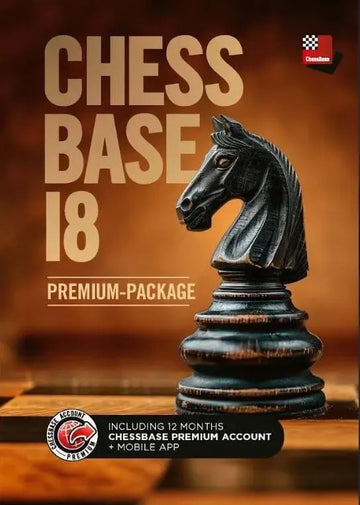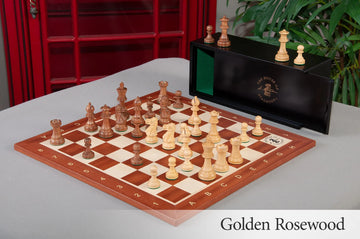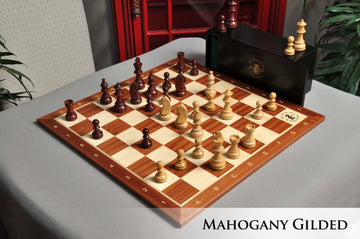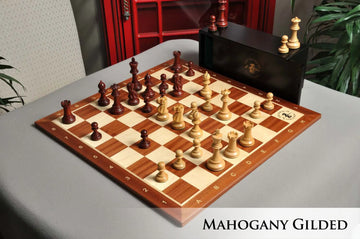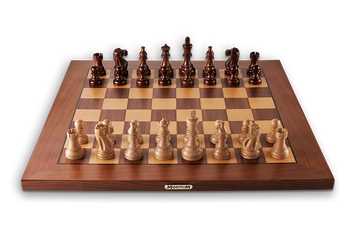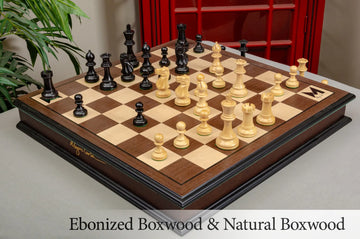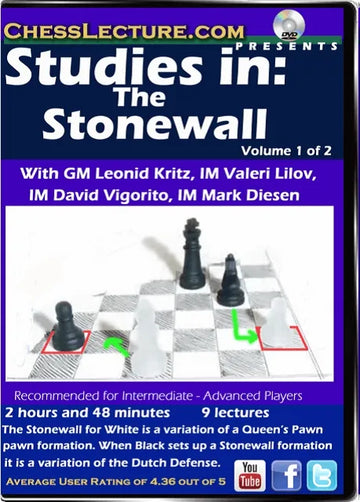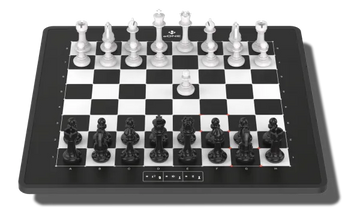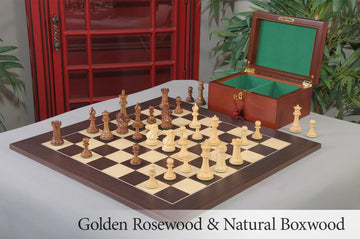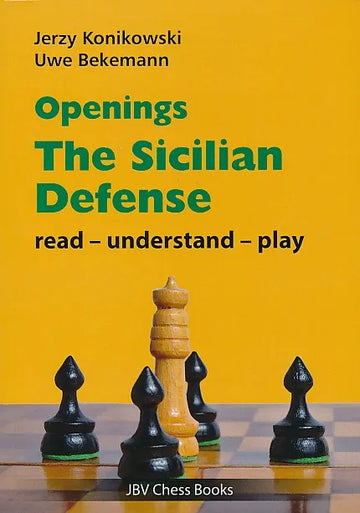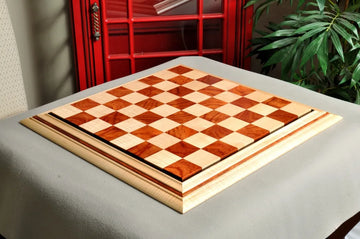The 10 Best Chess Openings for Black
Have you ever wondered what is the very best chess opening for Black? Have you longed for lines to overthrow White’s initiative and win a positional and material advantage? You’ve come to the right place.
For this article, we’ve trawled through endless variations on chess databases to bring you the statistically highest scoring answers to the most common openings White may play.
We’ve even dug around to find the best openings for beginners and grandmasters to play with the black pieces. There’s something for everyone - unbreakable classics, as well as offbeat gems!

The Best Opening vs. 1.e4: The Caro-Kann Defense
Among all responses to 1.e4, the Caro-Kann Defense (1...c6), is the highest scoring across all player levels and time controls.
This may come as a surprise to many. The Caro-Kann is not the most common opening, only being played in 7% of games. Indeed, its rarity contributes to its success! As Black, you have an excellent chance of knowing the lines better than your opponent and winning a favorable outcome.

Key Themes of the Caro-Kann Defense
Prepares for 2.d4
The main idea of playing 1...c6 is to offer a supporting pawn for 2. d4. Now, if White captures (exd4), Black can recapture, winning a pawn majority in the center. If White doesn’t capture immediately, the pawn stands firm on d4, offering Black leverage in the center.
A Safe, Solid Approach
Many high-scoring openings involve high-risk gambits and traps. Not so with the Caro-Kann. A rigorous, solid opening, Black typically plays patiently for superior pawn structures that bode well for the end game.
Easy to Learn & Strong at All Levels
The concepts and game plan involved in the Caro-Kann are relatively easy to understand and transfer well across different variations. This makes it an excellent opening for beginners - yet it boasts a robust track record at Grandmaster level, too!
The Best Opening vs. Italian Game: The Rousseau Gambit
The Italian game: 1. e4 e5 2. Nf3 Nc6 3. Bc4 is one of the White’s most popular openings, especially at club level. So what’s the best way to counter it? Among responses, one move stands head and shoulders above the rest.
The Rousseau Gambit is an aggressive counterstrike for Black that debuts with the startling move: 3...f5. Suddenly, the odds are tipped in Black’s favor. Upon initiating the Rousseau Gambit, Black wins 52.5% of games.

Key Themes of the Rousseau Gambit
The Trickiest Opening in Chess!
Grandmaster Igor Smirnov has described the Rousseau Gambit as the ‘trickiest opening in chess’. Because it is relatively unknown, most White players stumble blindly into the first trap. By taking the sacrificial pawn (4.exf5), White permits Black to advance its kingspawn, pushing White’s knight back to its home square. After 5...Nf6 and 6...d5, Black enjoys a massive lead in development.
Attacking White’s Open e-File
Whether White accepts the gambit or allows Black to capture its king’s pawn, the semi-open e-file becomes a dangerous avenue for Black to attack White’s king. Lethal pins and X-ray attacks can sometimes cost White its queen or a quick checkmate.
Dubious Against Advanced Players
More advanced players will more likely play 4.d3 or 4.d4, both of which can win White a positional and material lead. Statistics show the opening is very successful against beginner-intermediate players but becomes progressively less effective as the caliber of the opponent increases.
The Best Answer to the Ruy Lopez: The Schliemann Defense
The Ruy Lopez is one of the most complex openings White can play. In fact, it’s burdened with more theory than any other White opening! So how can you make light work of it when countering it with Black?
Few people realize that the highest scoring answer to the Ruy Lopez isn’t any of the mainlines, but the offbeat Schliemann Defense: 1. e4 e5 2. Nf3 Nc6 3. Bb5 f5. Scoring Black a stunning 53 points per 100 games played, the Schliemann is the only response that scores Black a majority!

Key Themes of the Schliemann Defense
A Surprise Attack!
The Ruy Lopez is renowned for its long, drawn-out games of positional play where Black struggles to retain the center - but the Schliemann Defense throws a spanner in the works. By playing 3...f5, Black hampers White’s usual plans and forces the opponent to think long and hard about how to continue.
White Unable to Capture (4.exf5)
The Schliemann Defense can’t be dismissed as a reckless gambit. White is left unable to capture on f5 for the same reasons as the Rousseau Gambit: Black will simply play 6...e4 to embarrass White’s knight. White must now play 4.Nc3 or 4.d3 for a fighting chance – but few players figure that out, especially in faster games!
Open f-File – a Double-edged Sword
Playing 3...f5 isn’t without its dangers - it does expose White’s kingside to enemy attack. On the other hand, the semi-open f-file can be utilized for deadly rook attacks later on – typically after castling kingside.
Best for Beginners - The Scandinavian Defense Modern Variation
In the Scandinavian Defense (1.e4 d5), White usually captures (2.exd5). Instead of recapturing with its queen, Black initiates the Modern Variation with 2...Nf6.
Upon playing 2...Nf6, Black immediately enters favorable territory. From millions of games played by sub-1200 Elo players, Black scores a handsome average of 51.5 points from every 100 games played.

Key Themes of The Scandinavian Defense Modern Variation
Evading Attacks Upon Black's Queen
By playing 2...Nf6 instead of 2...Qxd5, Black threatens to capture White’s e5 pawn without exposing its Queen to immediate attack. White can still drag Black’s queen into the middle by exchanging knights. But bereft of its queenside knight, White can no longer attack Black’s queen, now sitting advantageously on d5.
Tricks and Traps
The Scandinavian Defense Modern Variation boasts a tonne of terrifying traps to lure White into. This makes it a great option for blitz and bullet games.
For example: 1. e4 d5 2. exd5 Nf6 3. d4 Nxd5 4. c4 Nb4 5. Qa4+ N8c6 6. d5 b5. From here, Black has a wealth of tricky lines to win material or even the entire game.
Puts Black in Control from the Start
The great thing about the Scandi Modern Variation is that it's rarely played, so your opponent is unlikely to know how to counter it effectively. From the moment you play 1...d5, you can be pretty sure you'll get a line that you know how to conquer.
The Best Answer to 1.d4: The Old Benoni Defense
It’s amazing how many chess players have never heard of the Old Benoni Defense (1.d4 c5). Perhaps that’s part of the reason it's such a high scoring opening for Black. Despite only being played in 5% of games, it scores Black 50.5 points from every 100 games - better than any other answer to d4!
The ‘Old Benoni’ (1.d4 c5) is only one line of the Benoni Defense family which includes the Czech Benoni and Modern Benoni. All hinge around Black playing c5 to undermine White’s d4 pawn.

Key Themes of the Old Benoni Defense
A Gambit to Control the Center
By playing 1...c4, Black offers White a sacrificial pawn in exchange for fast development and control of the center. If White captures, the pawn becomes easy to recapture on c4. Black is quickly ahead.
Feisty Fianchetto
If White pushes the pawn (2.d5), Black can fianchetto its dark-squared bishop to control the dangerous central diagonal. A notorious variation among others is the Benko Gambit.
Aggressive Tricks and Traps
The Old Benoni boasts many traps to win a quick advantage. Queen attacks on a5 and b6 combined with the fianchettoed bishop aiming at White’s queenside can often prove deadly against underprepared opponents – especially in blitz and bullet games!
The Best Response to The Queen’s Gambit: The Albin Countergambit
The Queen’s Gambit (1.d4 d5 2.c4) is one of the longest-standing and strongest openings that White can play. So much so that it scores highly against any of the common variations that Black may choose to play.
Among Black’s possible responses, however, one stands out for scoring substantially better than the rest. By playing 2...e5, Black fearlessly launches into The Albin Countergambit, an eccentric sideline that catches many White players off-guard. Amazingly, it scores 2% higher than any other answer to the Queen’s Gambit!

Key Themes of The Albin Countergambit
Offbeat and Edgy
One of the reasons that the Queen’s Gambit scores so well is that White usually knows the best way to counter the regular responses. The Queen’s Gambit Accepted, the Queen’s Gambit Declined, and the Slav Defense all tend to cede White a positional advantage. Many players, however, are not familiar with the Albin Countergambit, so can slip up easily.
A Risky Strategy
While the Albin Countergambit is statistically the most successful opening vs. the Queen’s Gambit, it’s not without its dangers. By playing 2...e5, Black immediately sacrifices its precious kingspawn in a bid to advance its queen’s pawn (3.dxe5 d4) and ensnare White in one of many traps. If your opponent knows the right moves, however, they may win a quick advantage!
The Infamous Lasker Trap
After 3...d4, White will often try to dislodge the inconvenient pawn with 4.e3, but this only makes matters worse. Black swoops in with 4...Bb4+, a dangerous attack on White’s exposed king. If White continues with natural moves, it may easily slip into the fascinating Lasker Trap, losing its queen in nine moves: 1. d4 d5 2. c4 e5 3. dxe5 d4 4. e3 Bb4+ 5.Bd2 5... dxe3 6. Bxb4 exf2+ 7. Ke2 fxg1=N+ 8. Rxg1 Bg4+ 9. Ke1 Qxd1#
Best for Blitz and Bullet Games – The Englund Gambit
In blitz and bullet games, it's a race against the clock to win fast. That’s why openings with lots of tricks and traps score so highly. The infamous Englund Gambit (1.d4 e5) is a classic example.
White pauses, losing time by asking: ‘Why is Black offering a free pawn?’ After capturing, Black coaxes White to make several more ‘natural moves’, stumbling hopelessly into some dastardly traps. By simply following the most commonly played moves, White loses nearly 60% of blitz and bullet games!

Key Themes of The Englund Gambit
Gambit or Gamble?!
An important disclaimer about audacious openings like the Englund Gambit is that you’re taking a real risk and the stakes are high! By allowing White to capture your king’s pawn without guarantee of rebate, you may lose both material and the fight for the center. It only pays off if White falls for the traps!
Multiple Lines of Fire
One fun thing about the Englund Gambit is that it doesn’t offer up just one trap, but several. Even if White knows the main line, you can still launch an off-piste ambush to catch them out!
Especially Strong Against Beginners
Chess opening databases reveal that the Englund Gambit is especially successful against novice chess players with an ELO below 1200. Hardly surprising, since you’re relying on your opponent making some simple errors to score a quick win!
Best Opening That Can Be Played as Black or White! – The Stonewall Setup
Few opening setups can be played as Black or White, but the Stonewall Setup is an exception. Played by White, the system is known as the Stonewall Attack. Played by Black – the Stonewall Defense (Aka. ‘Stonewall Dutch’).
The Dutch Stonewall Defense is characterized by posting pawns on the light-colored squares: f5, e6, d5, and c6. Achieving a position that is both defensively sound with fierce attacking options, the Stonewall scores Black a healthy 52.5 points from 100 games when White follows the most typical moves.

Key Themes of the Stonewall Defense
Control Over e4
By posting protected pawns on both f5 and d5, Black prevents White from landing any piece on the critical e4 square. Placing both f- and d- pawns early on is critical to stop White from playing e2-e4 and spoiling your plans.
An Answer to Multiple Openings
Not only is the Stonewall playable as White or Black, but it’s also viable against multiple White openings. The Stonewall Dutch is most typically seen against Queen’s Pawn Openings, but it can also be used to play against the English Opening (1.c4) and others that don’t play an early e2-e4.
An Opening You Can Master!
Because you can play the Stonewall in so many situations, you’ll have abundant chances to play it regularly. Whether playing as Black or White, you’ll see similar positions repeating themselves over and over until you’re a master of converting them into wins.
Best Openings for Black for Grandmasters
Openings that work well for grandmasters often don’t work so well for amateur players. That’s because chess is a completely different game at that level! Games are so tight that around 45% of matches end in a draw. Even the smallest material or positional advantage can prove decisive. Openings must be bomb-proof to survive.
Best Grandmaster Opening vs. 1.e4 – The Sicilian Defense
The King's Pawn Opening (1.e4) is the most popular opening at Grandmaster level. Played in 46% of games, it wins White an average of 54.5 points from every 100 games played. So how can Black tip the odds in its favor?
The Sicilian Defense (1.e4 c5) is Black’s highest scoring move against 1.e4 at Master level. Earning 47 points from every 100 games played, it scores significantly better than other common responses like 1...e5.

Key Themes of the Sicilian Defense
Fight for the Center
By playing 1...c5, Black prevents White from immediately playing d2-d4 and gaining the ‘perfect center’. Nc6 usually follows, endowing Black with a strong influence over d4.
A Safe Square on c5
Unlike 1...e5, the Sicilian offers Black a safe square to post its challenging pawn on c5. Eventually, White will typically play d2-d4. After the exchange, Black wins a pawn majority in the center of the board.
Counter Attack on the Queenside
By playing the Sicilian, Black immediately creates a spatial advantage on the queenside. Now, White must beware of queen attacks from b6 and a5. After the c-pawn is exchanged, the semi-open c-file becomes a dangerous avenue for Black’s queen and rook to attack.
Best Grandmaster Opening vs.1.d4 – The Indian Game
Traditionally, masters countered 1.d4 with 1...d5 – the Symmetrical Queen’s Pawn Opening. But this didn’t score very well for Black. Usually following with the Queen’s Gambit, White can win a quick advantage that is not easy to rectify.
Instead, Black can avoid a symmetrical opening altogether by playing 1...Nf6 – the Indian Game. Also known as the Indian Defenses, this scores much better for Black. Whereas 1...d4 scores 43.5 points from every 100 master games, the Indian Game boasts 45%.

Key Themes of the Indian Defenses
A More Patient Approach
Instead of immediately fighting against White's initiative, Black allows White to dominate the center with pawns. Later on, with deadly timing, Black attacks the center with pawn advances. This offers Black flexibility but also risks falling foul of White’s faster development.
Complex Theory
Because White can answer the Indian Game with many responses, there are plenty of lines to learn for Black! While 2.c4 is the most common move, 2.Nf3 or 2.Bg5 are respected alternatives, among several others.
Dynamic and Versatile
White has many ways to play the Indian Defense, but so does Black! After 2.c4, for example, Black can launch into the Nimzo-Indian Defense, the Queen’s Indian Defense, or the King’s Indian Defense. While the Queen’s Indian is a more solid response, the King’s Indian is aggressive and risky. In this way, the Indian Defenses offer something for every style of player.
Best Chess Opening for Black? It's Up to You!
After reading this, we hope that you’re brimming with excitement to learn and play one or more of these outstanding openings in your next game of chess.
Whether you’re a cut-throat blitz player looking for the next devastating trap or a slow and steady tournament player who prefers the long game, these openings offer you the precious chance to substantially increase your win rate with the black pieces.

